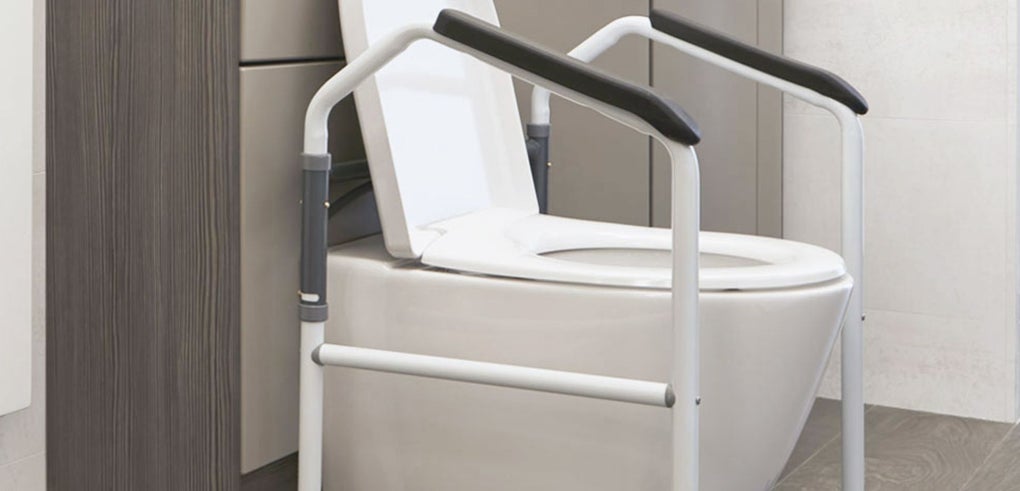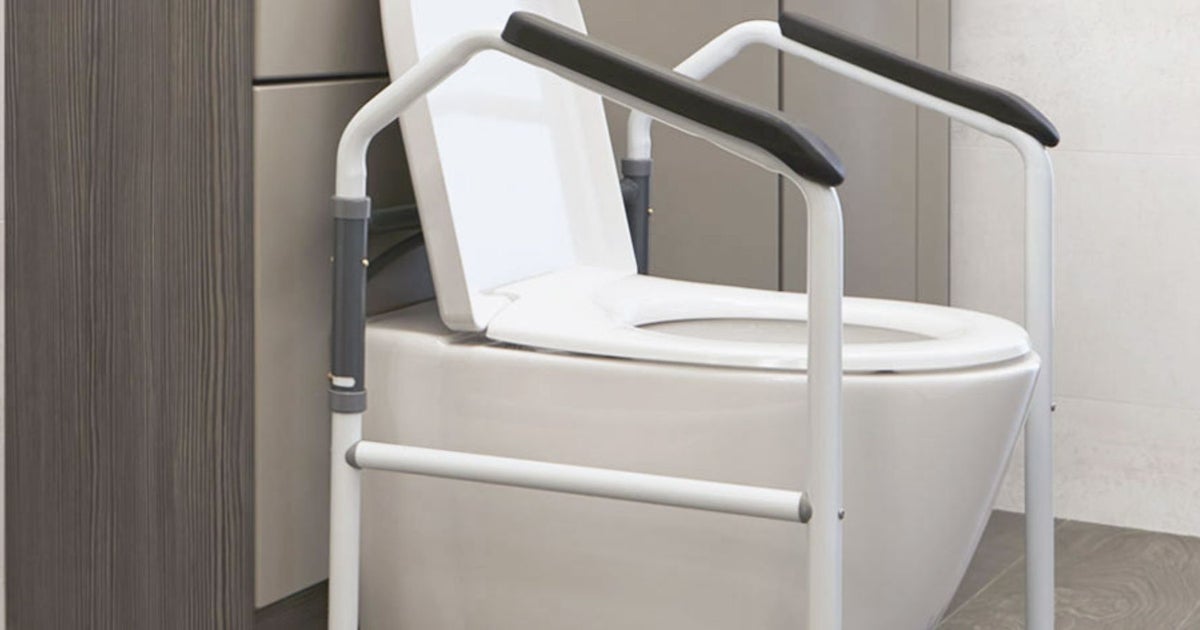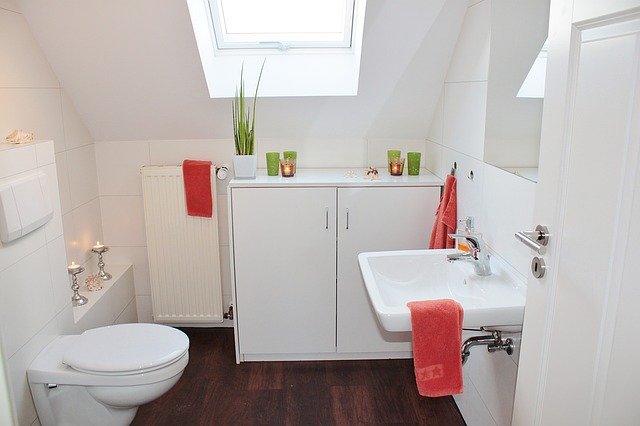Facing hip replacement surgery can be daunting, and you probably have a mountain of questions on your mind. One question that may stand out is, “When can you use a regular toilet after hip replacement?”
This isn’t just a matter of convenience; it’s about regaining your independence and comfort. In the days and weeks following your surgery, every movement requires careful consideration. You want to heal safely while maintaining as much normalcy as possible. Understanding when and how you can return to everyday activities, like using the bathroom, is crucial.
This article will guide you through the recovery timeline, practical tips, and expert advice so that you feel confident and prepared. Let’s dive into how you can navigate this important aspect of your recovery journey.
Table of Contents
Recovery Timeline
After a hip replacement, extra care is vital. The first few weeks are critical. You might need to use a raised toilet seat. This helps keep the hip safe. It also makes sitting easier. Always follow your doctor’s advice.
During this time, your strength improves. Walking gets easier. You might start using a regular toilet. Ask your doctor first. Safety is most important. You should still be careful. Avoid bending too much.
Full recovery takes months. Your hip should feel strong. Using a regular toilet will feel normal. Keep practicing exercises. They help your hip stay strong. Always listen to your body. If it hurts, rest a little more.
Doctor’s Recommendations
Doctors give clear instructions after hip surgery. These instructions help you heal safely. Using a regular toilet might take time. Doctors often suggest raised toilet seats. They help you sit and stand easily. Avoid bending your hip too much. This can cause problems.
Follow-up visits are very important. Your doctor checks your progress. They see how your hip is healing. Doctors tell you when it’s safe to use a regular toilet. Every patient’s recovery is different. Some may heal quickly. Others might take longer.
Adaptive Equipment
Raised toilet seats help people after hip surgery. These seats make toilets higher. This reduces the need to bend. Bending can hurt after surgery. Painful movements should be avoided. Raised seats are easy to install. No special tools are needed. They fit most toilets. Using them feels safe and comfortable. These seats help in recovery.
Grab bars offer extra support. They are strong and sturdy. Bars help balance when sitting or standing. They prevent falls and slips. Grab bars are easy to attach. Place them near toilets or walls. They are helpful for those with weak legs. Support helps build confidence. These bars are a good addition to bathrooms.

Credit: www.equipmeot.com
Safety Tips
Using a regular toilet after hip replacement can be tricky. Sit slowly and use your hands to hold onto supports. Keep your knees lower than your hips. This helps keep your new hip safe. Avoid bending too much at the waist. Turn your feet outward when sitting. This helps your balance. Take your time to avoid pain.
Falls can hurt your new hip. Use a grab bar to stand up. Keep the floor dry and clean. Wear shoes with good grip. Be careful when turning around. Move slowly and carefully. Ask for help if you need it. Keep things within easy reach. This helps you stay safe. Stay focused on each step.
Physical Therapy Role
Physical therapy helps your muscles get stronger. Strong muscles support the new hip. It is important to do exercises daily. These exercises are easy and safe. They help you walk better and faster. Your therapist will guide you. They will make a plan just for you. Follow their advice for the best results.
Flexibility is key after hip surgery. Stretching helps your hip move well. It reduces stiffness and pain. Simple stretches make a big difference. Always warm up before stretching. Listen to your body. Stop if you feel pain. Your therapist will show you safe stretches. Practice these stretches every day. This keeps your hip flexible and healthy.

Credit: www.completecareshop.co.uk
Patient Experiences
Many patients face challenges after hip replacement. Sitting on a regular toilet can be hard. Bending the hip too much is not safe. It can cause pain or injury. Using a raised toilet seat is often needed. It helps keep the hip at the right angle. Balance is also a big issue. Some people feel wobbly. They may need help to sit or stand.
Recovery takes time and patience. Following the doctor’s advice is key. Every day can bring small improvements.
Many patients share their success stories online. They talk about getting better each day. Some start using a regular toilet in a few weeks. Others take longer but do well. Listening to their bodies helps them heal. They use tools like grab bars for support. Family or friends often lend a hand. These stories inspire hope and courage.

Credit: www.completecareshop.co.uk
Frequently Asked Questions
How Soon Can I Use A Regular Toilet?
After hip replacement, using a regular toilet usually becomes possible within 4 to 6 weeks. It depends on your recovery progress and doctor’s advice. Initially, an elevated toilet seat may be recommended to prevent hip strain. Always consult your healthcare provider for personalized guidance based on your condition.
Why Is An Elevated Toilet Seat Recommended?
An elevated toilet seat minimizes hip flexion, reducing the risk of dislocation after surgery. It helps maintain hip precautions, ensuring safe and comfortable use of the toilet. Using an elevated seat may be necessary for several weeks. Always follow your doctor’s recommendations regarding toilet seat adjustments during recovery.
Can I Sit Normally After Hip Replacement?
Sitting normally may be possible after 6 to 8 weeks, depending on your recovery. You should avoid low seats and ensure your knees remain lower than your hips. Following your doctor’s advice on sitting positions is crucial for a safe recovery.
Always prioritize comfort and safety while sitting.
What Precautions Should I Take When Using The Toilet?
Ensure your knees remain below your hips and avoid twisting movements. Use a raised toilet seat if recommended. Always follow your surgeon’s instructions regarding movement and positioning. Taking these precautions helps prevent complications and ensures a smoother recovery after hip replacement surgery.
Conclusion
Recovering from hip replacement surgery requires patience and care. Using a regular toilet becomes easier with time and healing. Follow your doctor’s advice for the best recovery practices. Gradually build strength and flexibility. Listen to your body and avoid pushing too hard.
Safety should always come first. Use adaptive aids if needed. They provide extra support during the transition. Stay positive throughout your recovery journey. Your comfort will increase with each passing day. Soon, you’ll regain your independence and confidence. Remember, healing is a process.
Take each step at your own pace. You will get there.






